Structuring Circular Objectives and Design Strategies for the Circular Economy: A Multi-Hierarchical Theoretical Framework
Abstract
1. Introduction
- To support researchers and practitioners in managing and using a multitude of design strategies;
- To empirically test design strategies and their relationships over the entire product life cycle;
- To provide an overall view of the entire product lifetime to create an overall design strategy for specific contexts;
- To integrate relationships between different design strategies to understand the impacts and influences of different strategies and improve the overall design process;
- To integrate different disciplines, knowledge and information throughout the entire product lifetime process, and how to prioritise the multitude of design strategies collaboratively and create value for all stakeholders involved;
- To integrate technical and non-technical strategies.
2. Materials and Methods
- STAGE 1: Literature review on circular product design.
- STAGE 2: Identification of different classifications and representations of design strategies.
- (i)
- Classification of design strategies based on relevance;
- (ii)
- Classification of design strategies based on phases of the product life cycle; and
- (iii)
- Classification of design strategies based on life cycles.
- STAGE 3: Proposal of a conceptual framework.
- STAGE 4: Testing of the framework through four case studies.
3. Results
3.1. Literature Review on Circular Product Design
3.1.1. Circular Objectives
3.1.2. Design Strategies
3.1.3. The Research Gap and the Research Goal
3.2. Classifications and Representations of Design Strategies in Circular Product Design
3.2.1. Design Strategies Classification According to Relevance
3.2.2. Design Strategies Classification according to Product Life Cycle Phases
3.2.3. Design Strategies Classification According to Life Cycles
3.3. Proposal of a Novel Conceptual Framework
- Overview of hierarchical dependencies—The three hierarchies (hierarchy according to relevance, according to product life cycle phases, according to life cycles) specify only certain dependencies, making it difficult to provide a complete picture of the product lifetime strategy;
- Limit in the visualisation of strategies following the first cycle—It is highly difficult to structure hierarchies on different temporal cycles;
- Rigidly defined characteristics—CE is a broad topic that involves different actors and sectors on various levels, and not all of them define objectives and strategies in the same way. This is also true between different countries and continents. This could prevent the mutual understanding of the different actors involved.
- Definition of multiple circular objectives—Only a taxometric hierarchical structure allows for the development of clear and simple circular objectives, which is more difficult in the structures of cycle phases diagrams and loop diagrams.
- Conflicting strategies—When setting objectives among different departments and stakeholders, especially over multiple product life cycles, it may be possible to have strategies that come into conflict with each other.
- Identify and coordinate multiple life cycle strategies—Strategies used in the first or subsequent cycles are rarely organised in a logical order. Explicitly identifying the strategies used in the different product life cycles can facilitate the coordination and management of product design from the very first stages.
- Complementary strategies—To be effective, specific strategies need to be supported in different product life cycle phases with complementary subset strategies.
- Limit the ability to reflect, discover and create new design strategies—Certain classifications make it difficult to manage the diverse design strategies required in the CE to tackle complex problems. A rigid structure can obstruct the development and refinement of circular objectives and design strategies.
- Formulate clear and concise circular objectives in a new and more methodical way. To be successful, almost every article or book regarding management and strategy design discusses the importance of defining objectives. The CE is no exception. Objectives define the strategic approach; they can help to determine the product lifetime plan and how many life cycles the company may be able to achieve. In the beginning, it is all about creating circular objectives;
- Make connections between circular business and design strategies based on the circular objectives. Circular objectives should make it easy to comprehend how the business model can support them and, thus, how products or services should be designed to ensure that they can be reintegrated. This should be repeated each time the circular objective changes;
- Improved product life cycle understanding of users and contexts. Managers and designers should examine factors such as who the users are in different life cycles and if there are optimum conditions to recover the product in a given environment, depending on the different life cycles and the intended circular objective;
- Uncover hierarchical linkages, dependencies, correlations, or conflicts and formulate the optimal solutions throughout the supply chain and life cycles. Once the first overview of the circular model has been shown, it is much easier to verify whether the strategies conceptualised between distinct product life phases support one another. If the framework is employed early in the design phase, it is relatively affordable to modify and improve them;
- Accept increasing complexity in order to build strategies that have an impact on the second, third and so on cycle. Managing the complexity of designing circular products and services across multiple life cycles is among the most significant challenges in the CE. By adopting an aggregated structured visualisation of hierarchies supporting expanding complexity, the multi-hierarchical circular design framework can assist managers and designers in integrating numerous life cycles and critical strategic considerations;
- Identifying which organisations in the supply chain are the most well-suited for collaborating to achieve one or more circular objectives. Creating a product lifetime strategy allows a company to assess its strengths and limitations, as well as the stakeholders with which it may partner to achieve circular value creation successfully;
- Facilitating cross-disciplinary and cross-sectoral cooperation and formulation of integrated objectives and strategies among various actors. Dialogue and understanding are crucial to establishing synergies amongst various stakeholders. This can be achieved by clearly communicating how the synergy of two or more organisations can generate circular value together;
- Promote the development of specific complementary strategies to support the transition from one life cycle to another. It is crucial in a CE to build products and services that meet third-party technical specifications, particularly in open-loop systems. This can be accomplished through collaboration and co-creation for a shared product lifetime strategy;
- Enable the articulation of novel design strategies both between circular objectives and strategies across domains of knowledge. The ability to see the big picture of the many life cycles and strategies employed over the various product life cycles makes it easier to identify any considerations that have been overlooked and design solutions to address them.
3.4. Testing of the Framework through Four Case Studies
3.4.1. Patagonia
3.4.2. Bugaboo
3.4.3. Loop by Terracycle
3.4.4. Fairphone 4
4. Discussion
5. Conclusions
Supplementary Materials
Author Contributions
Funding
Institutional Review Board Statement
Informed Consent Statement
Data Availability Statement
Conflicts of Interest
References
- Ellen MacArthur Foundation. Towards the Circular Economy Vol. 1: An Economic and Business Rationale for an Accelerated Transition; Ellen MacArthur Foundation: Cowes, UK, 2012. [Google Scholar]
- Ghisellini, P.; Cialani, C.; Ulgiati, S. A review on circular economy: The expected transition to a balanced interplay of environmental and economic systems. J. Clean. Prod. 2016, 114, 11–32. [Google Scholar] [CrossRef]
- Tam, E.; Soulliere, K.; Sawyer-Beaulieu, S. Managing complex products to support the circular economy. Resour. Conserv. Recycl. 2019, 145, 124–125. [Google Scholar] [CrossRef]
- Castro, C.G.; Trevisan, A.H.; Pigosso, D.A.; Mascarenhas, J. The rebound effect of circular economy: Definitions, mechanisms and a research agenda. J. Clean. Prod. 2022, 345, 131136. [Google Scholar] [CrossRef]
- Ceschin, F.; Gaziulusoy, I. Evolution of design for sustainability: From product design to design for system innovations and transitions. Des. Stud. 2016, 47, 118–163. [Google Scholar] [CrossRef]
- Moreno, M.; de los Rios, C.; Rowe, Z.; Charnley, F. A Conceptual Framework for Circular Design. Sustainability 2016, 8, 937. [Google Scholar] [CrossRef]
- McDonough, W.; Braungart, M. Cradle to Cradle: Remaking the Way We Make Things; North Point Press: London, UK, 2009. [Google Scholar]
- De Schoenmakere, M.; Gillabel, J. Circular by Design: Products in the Circular Economy; European Environment Agency: Copenhagen, Denmark, 2017; p. 6.
- Ribul, M.; Lanot, A.; Pisapia, C.T.; Purnell, P.; McQueen-Mason, S.J.; Baurley, S. Mechanical, chemical, biological: Moving towards closed-loop bio-based recycling in a circular economy of sustainable textiles. J. Clean. Prod. 2021, 326, 129325. [Google Scholar] [CrossRef]
- Bakker, C.; Balkenende, R. A renewed recognition of the materiality of design in a circular economy: The case of bio-based plastics. In Materials Experience 2; Butterworth-Heinemann: Oxford, UK, 2021; pp. 193–206. [Google Scholar]
- Potting, J.; Hekkert, M.P.; Worrell, E.; Hanemaaijer, A. Circular Economy: Measuring Innovation in the Product Chain; PBL Netherlands Assessment Agency: Hague, The Netherlands, 2017. [Google Scholar]
- Reike, D.; Vermeulen, W.J.; Witjes, S. The circular economy: New or refurbished as CE 3.0?—Exploring controversies in the conceptualization of the circular economy through a focus on history and resource value retention options. Resour. Conserv. Recycl. 2018, 135, 246–264. [Google Scholar] [CrossRef]
- Bauer, T.; Zwolinski, P.; Nasr, N.; Mandil, G. Characterization of circular strategies to better design circular industrial systems. J. Remanufacturing 2020, 10, 161–176. [Google Scholar] [CrossRef]
- Morseletto, P. Targets for a circular economy. Resour. Conserv. Recycl. 2020, 153, 104553. [Google Scholar] [CrossRef]
- Lüdeke-Freund, F.; Gold, S.; Bocken, N. A Review and Basic Typology of Circular Economy Business Model Patterns. J. Ind. Ecol. 2018, 23, 36–61. [Google Scholar] [CrossRef]
- Bocken, N.M.; De Pauw, I.; Bakker, C.; Van Der Grinten, B. Product design and business model strategies for a circular economy. J. Ind. Prod. Eng. 2016, 33, 308–320. [Google Scholar] [CrossRef]
- Den Hollander, M.C.; Bakker, C.A.; Hultink, E.J. Product Design in a Circular Economy: Development of a Typology of Key Concepts and Terms. J. Ind. Ecol. 2017, 21, 517–525. [Google Scholar] [CrossRef]
- Konietzko, J.; Bocken, N.; Hultink, E.J. Circular Ecosystem Innovation: An Initial Set of Principles. J. Clean. Prod. 2020, 253, 119942. [Google Scholar] [CrossRef]
- De Magalhães, R.F.; Danilevicz, D.M.F.; Palazzo, J. Managing trade-offs in complex scenarios: A decision-making tool for sustainability projects. J. Clean. Prod. 2019, 212, 447–460. [Google Scholar] [CrossRef]
- Prendeville, S.M.; O’Connor, F.; Nancy, B.M.P.; Bakker, C. Uncovering Ecodesign Dilemmas: A Path to Business Model Innovation. J. Clean. Prod. 2017, 143, 1327–1339. [Google Scholar] [CrossRef]
- Pieroni, M.; Pigosso, D.; McAloone, T. Exploring the synergistic relationships of circular business model development and product design. In DS 92: Proceedings of the DESIGN 2018 15th International Design Conference; The Design Society: Glasgow, UK, 2018; pp. 2715–2726. [Google Scholar]
- Kazancoglu, Y.; Kazancoglu, I.; Sagnak, M. A New Holistic Conceptual Framework for Green Supply Chain Management Performance Assessment Based on Circular Economy. J. Clean. Prod. 2018, 195, 1282–1299. [Google Scholar] [CrossRef]
- Umeda, Y.; Takata, S.; Kimura, F.; Tomiyama, T.; Sutherland, J.W.; Kara, S.; Herrmann, C.; Duflou, J.R. Toward Integrated Product and Process Life Cycle Planning—An Environmental Perspective. CIRP 881 Ann. 2018, 61, 681–702. [Google Scholar] [CrossRef]
- Lewandowski, M. Designing the Business Models for Circular Economy—Towards the Conceptual Framework. Sustainability 2012, 8, 43. [Google Scholar] [CrossRef]
- Kwasnik, B. The Role of Classification in Knowledge Representation and Discovery. Summer 1999, 48, 22–47. [Google Scholar]
- Arnette, A.N.; Brewer, B.L.; Choal, T. Design for sustainability (DFS): The intersection of supply chain and environment. J. Clean. Prod. 2014, 83, 374–390. [Google Scholar] [CrossRef]
- Dul, J.; Hak, T. Case Study Methodology in Business Research; Routledge: London, UK, 2007. [Google Scholar] [CrossRef]
- Danson, M.; Arshad, N. The literature review. In Research Methods for Business and Management: A Guide to Writing Your Dissertation; Goodfellow Publishers Limited: Oxford, UK, 2014; pp. 37–57. [Google Scholar]
- Rowley, J.E.; Farrow, J. Organizing Knowledge: Introduction to Access to Information, 1st ed.; Routledge: London, UK, 2017. [Google Scholar]
- Thierry, M.; Salomon, M.; van Nunen, J.; van Wassenhove, L. Strategic Issues in Product Recovery Management: California Management Review. SAGE J. 1995, 37, 114–136. [Google Scholar] [CrossRef]
- King, A.; Burgess, S.; Ijomah, W.; McMahon, C. Design for End-of-Life: Repair, Recondition, Remanufacture or Recycle? Am. Soc. Mech. Eng. Digit. Collect. 2008, 3, 745–754. [Google Scholar] [CrossRef]
- Go, T.F.; Wahab, D.A.; Hishamuddin, H. Multiple Generation Life-Cycles for Product Sustainability: The Way Forward. J. Clean. Prod. 2015, 95, 16–29. [Google Scholar] [CrossRef]
- Gits, C.W. Design of Maintenance Concepts. Int. J. Prod. Econ. 2015, 24, 217–226. [Google Scholar] [CrossRef]
- Bakker, C.; Wang, F.; Huisman, J.; den Hollander, M. Products That Go Round: Exploring Product Life Extension through Design. J. Clean. Prod. 1992, 69, 10–16. [Google Scholar] [CrossRef]
- Stahel, W.R. The Performance Economy, 2nd ed.; Palgrave Macmillan: Basingstoke, UK; New York, NY, USA, 2010. [Google Scholar]
- Sirkin, T.; Houten, M.t. The Cascade Chain. A Theory and Tool for Achieving Resource Sustainability with Applications for Product Design. Resour. Conserv. Recycl. 1994, 10, 213–276. [Google Scholar] [CrossRef]
- Unilever. We’re Introducing Reusable, Refillable Packaging to Help Cut Waste. Available online: https://www.unilever.com/news/news-search/2019/we-are-introducing-reusable-refillable-packaging-to-help-cut-waste/ (accessed on 17 April 2022).
- Stahel, W. The Utilization-Focused Service Economy: Resource Efficiency and Product-Life Extension. The Greening of Industrial Ecosystems; National Academies: Washington, DC, USA, 1994; pp. 178–190. [Google Scholar]
- Department of Energy. Human Factors/Ergonomics Handbook for the Design for Ease of Maintenance (DOE-HDBK-1140-2001); United States Department of Energy: Washington, DC, USA, 2001.
- Bocken, N.M.P.; Short, S.W.; Rana, P.; Evans, S. A literature and practice review to develop sustainable business model archetypes. J. Clean. Prod. 2014, 65, 42–56. [Google Scholar] [CrossRef]
- Montalvo, C.; Peck, D.; Rietveld, E. A Longer Lifetime for Products: Benefits for Consumers and Companies. In Study for Internal Market and Consumer Protection (IMCO) Committee; European Parliament: Strasbourg, France, 2014. [Google Scholar]
- Haines-Gadd, M.; Chapman, J.; Lloyd, P.; Mason, J.; Aliakseyeu, D. Emotional Durability Design Nine—A Tool for Product Longevity. Sustainability 2018, 10, 1948. [Google Scholar] [CrossRef]
- EU—European Union. Sustainable Product Policy; EU Science Hub—European Commission. 2018. Available online: https://joint-research-centre.ec.europa.eu/scientific-activities-z/sustainable-product-policy_en (accessed on 26 May 2020).
- Gedell, S.; Johannesson, H. Design rationale and system description aspects in product platform design: Focusing reuse in the design lifecycle phase. Concurr. Eng. 2012, 21, 39–53. [Google Scholar] [CrossRef]
- Daae, J.; Chamberlin, L.; Boks, C. Dimensions of Behaviour Change in the context of Designing for a Circular Economy. Des. J. 2018, 21, 521–541. [Google Scholar] [CrossRef]
- Bürklin, N. Worn Wear: Better than New—How Patagonia’s Social Marketing Campaign Enhances Consumers’ Responsible Behavior. Soc. Mark. Action 2019, 187–201. [Google Scholar] [CrossRef]
- Kunamaneni, S.; Jassi, S.; Hoang, D. Promoting reuse behaviour: Challenges and strategies for repeat purchase, low-involvement products. Sustain. Prod. Consum. 2019, 20, 253–272. [Google Scholar] [CrossRef]
- Gelbmann, U.; Hammerl, B. Integrative re-use systems as innovative business models for devising sustainable product–service-systems. J. Clean. Prod. 2015, 97, 50–60. [Google Scholar] [CrossRef]
- Fortuna, L.M.; Diyamandoglu, V. A novel method for material characterization of reusable products. Waste Manag. 2016, 52, 14–24. [Google Scholar] [CrossRef] [PubMed]
- Paras, M.K.; Ekwall, D.; Pal, R.; Curteza, A.; Chen, Y.; Wang, L. An Exploratory Study of Swedish Charities to Develop a Model for the Reuse-Based Clothing Value Chain. Sustainability 2018, 10, 1176. [Google Scholar] [CrossRef]
- Nasr, N.; Thurston, M.; Remanufacturing: A Key Enabler to Sustainable Product Systems. Remanufacturing: A Key Enabler to Sustainable Product Systems. Rochester Inst. Technol. 2006, 15–18. Available online: https://www.mech.kuleuven.be/lce2006/key4.pdf (accessed on 28 April 2019).
- Gharfalkar, M.; Ali, Z.; Hillier, G. Clarifying the disagreements on various reuse options: Repair, recondition, refurbish and remanufacture. Waste Manag. Res. J. A Sustain. Circ. Econ. 2016, 34, 995–1005. [Google Scholar] [CrossRef]
- Van Weelden, E.; Mugge, R.; Bakker, C. Paving the way towards circular consumption: Exploring consumer acceptance of refurbished mobile phones in the Dutch market. J. Clean. Prod. 2016, 113, 743–754. [Google Scholar] [CrossRef]
- Mugge, R.; Jockin, B.; Bocken, N. How to sell refurbished smartphones? An investigation of different customer groups and appropriate incentives. J. Clean. Prod. 2017, 147, 284–296. [Google Scholar] [CrossRef]
- Mugge, R.; de Jong, W.; Person, O.; Hultink, E.J. ‘If It Ain’t Broke, Don’t Explain It’: The Influence of Visual and Verbal Information about Prior Use on Consumers’ Evaluations of Refurbished Electronics. Des. J. 2018, 21, 499–520. [Google Scholar] [CrossRef]
- Gray, C.; Charter, M. Remanufacturing and Product Design: Designing for the 7th Generation; Centre for Sustainable Design: Surrey, UK, 2007. [Google Scholar]
- Boorsma, N.; Peck, D.; Bakker, T.; Bakker, C.; Balkenende, R. The strategic value of design for remanufacturing: A case study of professional imaging equipment. J. Remanufacturing 2022, 12, 187–212. [Google Scholar] [CrossRef]
- Worrell, E.; Reuter, M.A. Definitions and Terminology in Handbook of Recycling. In Handbook of Recycling 2022; Worrell, E., Reuter, M.A., Eds.; Elsevier: Boston, MA, USA, 2014; pp. 9–16. [Google Scholar] [CrossRef]
- Calvo-Porral, C.; Lévy-Mangin, J.-P. The Circular Economy Business Model: Examining Consumers’ Acceptance of Recycled Goods. Adm. Sci. 2020, 10, 28. [Google Scholar] [CrossRef]
- Salvioni, D.; Almici, A. Transitioning Toward a Circular Economy: The Impact of Stakeholder Engagement on Sustainability Culture. Sustainability 2020, 12, 8641. [Google Scholar] [CrossRef]
- Sassanelli, C.; Urbinati, A.; Rosa, P.; Chiaroni, D.; Terzi, S. Addressing circular economy through design for X approaches: A systematic literature review. Comput. Ind. 2020, 120, 103245. [Google Scholar] [CrossRef]
- Bakker, C.A.; den Hollander, M.C.; van Hinte, E.; Zijlstra, Y. Products That Last—Product Design for Circular Business Models, 1st ed.; TU Delft Library/Marcel den Hollander IDRC: Delft, The Netherlands, 2020. [Google Scholar]
- Franco, M.A. A system dynamics approach to product design and business model strategies for the circular economy. J. Clean. Prod. 2019, 241, 118327. [Google Scholar] [CrossRef]
- Schäfer, M.; Löwer, M. Ecodesign—A Review of Reviews. Sustainability 2019, 13, 315. [Google Scholar] [CrossRef]
- Lomsma, F.; Brennan, G. The Emergence of Circular Economy: A New Framing Around Prolonging Resource Productivity. J. Ind. Ecol. 2017, 21, 603–614. [Google Scholar] [CrossRef]
- Ceschin, F. Sustainable Product-Service Systems: Between Strategic Design and Transition Studies; Springer Science Business Media: Berlin/Heidelberg, Germany, 2013. [Google Scholar]
- Sauvé, S.; Bernard, S.; Sloan, P. Environmental sciences, sustainable development and circular economy: Alternative concepts for trans-disciplinary research. Environ. Dev. 2016, 17, 48–56. [Google Scholar] [CrossRef]
- Brezet, H.; van Hemel, C. Ecodesign: A Promising Approach to Sustainable Production and Consumption; United Nations Pubns: Hague, The Netherlands, 1997. [Google Scholar]
- Velte, C.J.; Steinhilper, R. Complexity in a Circular Economy: A Need for Rethinking Complexity Management Strategies. In Proceedings of the World Congress on Engineering, London, UK, 29 June–1 July 2016; Volume 29. [Google Scholar]
- Ziout, A.; Azab, A.; Atwan, M. A holistic approach for decision on selection of end-of-life products recovery options. J. Clean. Prod. 2014, 65, 497–516. [Google Scholar] [CrossRef]
- Saidani, M.; Yannou, B.; Leroy, Y.; Cluzel, F.; Kendall, A. A taxonomy of circular economy indicators. J. Clean. Prod. 2018, 207, 542–559. [Google Scholar] [CrossRef]
- Franconi, A.; Badalucco, L.; Peck, D.; Nasr, N. A Multi-Hierarchical Design for X Framework for Accelerating Circular Economy. In Proceedings of the Conference: Product Lifetimes And The Environment, Berlin, Germany, 18–20 June 2019; Volume 3. [Google Scholar] [CrossRef]
- Brennan, G.; Tennant, M.; Blomsma, F. Business and Production Solutions: Closing Loops and the Circular Economy. In Sustainability: Key Issues 2019; Kopnina, H., Shoreman-Ouimet, E., Eds.; Routledge: London, UK, 2015; pp. 219–239. Available online: https://www.routledge.com/products/9780415529860 (accessed on 14 February 2021).
- Van den Berg, M.R.; Bakker, C.A.; A Product Design Framework for a Circular Economy. Proceedings of the PLATE Conference, Nottingham, UK, 17–19 June 2015; Available online: http://resolver.tudelft.nl/uuid:307f8b21-f24b-4ce1-ae45-85bdf1d4f471 (accessed on 14 February 2021).
- Moreno, M.A.; Ponte, O.; Charnley, F. Taxonomy of design strategies for a circular design tool. In Proceedings of the PLATE Conference, Delft, The Netherlands, 8–10 November 2017; Available online: https://dspace.lib.cranfield.ac.uk/bitstream/handle/1826/12740/Taxonomy_of_design_strategies-2017.pdf?sequence=1&isAllowed=y (accessed on 14 February 2021).
- Ræbild, U.; Bang, A.L. Rethinking the Fashion Collection as a Design Strategic Tool in a Circular Economy. Des. J. 2017, 20, S589–S599. [Google Scholar] [CrossRef][Green Version]
- Bakker, C.; Balkenende, R.; Poppelaars, F.; Balkenende, R.; Poppelaars, F. Design for Product Integrity in a Circular Economy. Designing for the Circular Economy; Routledge: London, UK, 2018. [Google Scholar] [CrossRef]
- Bovea, M.D.; Pérez-Belis, V. Identifying design guidelines to meet the circular economy principles: A case study on electric and electronic equipment. J. Environ. Manag. 2018, 228, 483–494. [Google Scholar] [CrossRef] [PubMed]
- De Pádua Pieroni, M.; Blomsma, F.; McAloone, T.C.; Pigosso, D.C.A. Enabling circular strategies with different types of product/service-systems. Procedia CIRP 2018, 73, 179–184. [Google Scholar] [CrossRef]
- Urbinati, A.; Latilla, V.M.; Chiaroni, D. The Role of Product Design in Circular Economy Business Models. In Proceedings of the ISPIM Innovation Symposium. The International Society for Professional Innovation Management (ISPIM), Stockholm, Sweden, 17–20 June 2018; Available online: http://arl.liuc.it/dspace/handle/2468/6163 (accessed on 13 October 2021).
- De Mattos, C.A.; De Albuquerque, T.L.M. Enabling Factors and Strategies for the Transition Toward a Circular Economy (CE). Sustainability 2018, 10, 4628. [Google Scholar] [CrossRef]
- Suárez-Eiroa, B.; Fernández, E.; Méndez-Martínez, G.; Soto-Oñate, D. Operational principles of circular economy for sustainable development: Linking theory and practice. J. Clean. Prod. 2019, 214, 952–961. [Google Scholar] [CrossRef]
- Blomsma, F.; Pieroni, M.; Kravchenko, M.; Pigosso, D.C.; Hildenbrand, J.; Kristinsdottir, A.R.; Kristoffersen, E.; Shahbazi, S.; Nielsen, K.D.; Jönbrink, A.-K.; et al. Developing a circular strategies framework for manufacturing companies to support circular economy-oriented innovation. J. Clean. Prod. 2019, 241, 118271. [Google Scholar] [CrossRef]
- Kristensen, H.S.; Mosgaard, M.A. A review of micro level indicators for a circular economy—Moving away from the three dimensions of sustainability? J. Clean. Prod. 2020, 243, 118531. [Google Scholar] [CrossRef]
- Aguiar, M.F.; Mesa, J.A.; Jugend, D.; Pinheiro, M.A.P.; Fiorini, P.D.C. Circular product design: Strategies, challenges and relationships with new product development. Manag. Environ. Qual. Int. J. 2021, 33, 300–329. [Google Scholar] [CrossRef]
- Ünal, E.; Shao, J. A taxonomy of circular economy implementation strategies for manufacturing firms: Analysis of 391 cradle-to-cradle products. J. Clean. Prod. 2018, 212, 754–765. [Google Scholar] [CrossRef]
- Mestre, A.; Cooper, T. Circular Product Design. A Multiple Loops Life Cycle Design Approach for the Circular Economy. Des. J. 2017, 20, S1620–S1635. [Google Scholar] [CrossRef]
- Prieto-Sandoval, V.; Jaca, C.; Santos, J.; Baumgartner, R.J.; Ormazabal, M. Key strategies, resources, and capabilities for implementing circular economy in industrial small and medium enterprises. Corp. Soc. Responsib. Environ. Manag. 2019, 26, 1473–1484. [Google Scholar] [CrossRef]
- Kalmykova, Y.; Sadagopan, M.; Rosado, L. Circular economy—From review of theories and practices to development of implementation tools. Resour. Conserv. Recycl. 2018, 135, 190–201. [Google Scholar] [CrossRef]
- White, P.; Pierre, L.S.; Belletire, S. Okala Practitioner: Integrating Ecological Design; IDSA: Phoenix, AZ, USA, 2015. [Google Scholar]
- Guiot, D.; Roux, D. A Second-Hand Shoppers’ Motivation Scale: Antecedents, Consequences, and Implications for Retailers. J. Retail. 2010, 86, 355–371. [Google Scholar] [CrossRef]
- Shafiee, M.; Chukova, S. Optimal upgrade strategy, warranty policy and sale price for second-hand products. Appl. Stoch. Model. Bus. Ind. 2012, 29, 157–169. [Google Scholar] [CrossRef]
- Connor-Crabb, A.; Miller, K.; Chapman, J. Design Strategies for the Eternal Reoccurrence of the New. Fash. Pr. 2016, 8, 22–43. [Google Scholar] [CrossRef]
- Wallner, T.S.; Magnier, L.; Mugge, R. An Exploration of the Value of Timeless Design Styles for the Consumer Acceptance of Refurbished Products. Sustainability 2020, 12, 1213. [Google Scholar] [CrossRef]
- Vezzoli, C.A.; Manzini, E. Design for Environmental Sustainability, 1st ed.; Springer: Berlin, Germany; London, UK, 2020. [Google Scholar]
- Keoleian, G.A.; Menerey, D. Sustainable Development by Design: Review of Life Cycle Design and Related Approaches. Air Waste 1994, 44, 645–668. [Google Scholar] [CrossRef]
- Rattalino, F. Circular advantage anyone? Sustainability-driven innovation and circularity at Patagonia, Inc. Thunderbird Int. Bus. Rev. 2017, 60, 747–755. [Google Scholar] [CrossRef]
- Michel, G.M.; Feori, M.; Damhorst, M.L.; Lee, Y.-A.; Niehm, L.S. Stories We Wear: Promoting Sustainability Practices with the Case of Patagonia. Fam. Consum. Sci. Res. J. 2019, 48, 165–180. Available online: https://doi.org/10.1111/fcsr.12340 (accessed on 15 February 2021). [CrossRef]
- Madrigal, G. Patagonia Rethread: Creating a Retail Recycling Program for Post-Consumer Clothing. June 2020. Available online: http://dspace.calstate.edu/handle/10211.3/216835 (accessed on 15 February 2021).
- Dijkstra-Hellinga, A. Bugaboo Circular Experience. Innoboost. Video. Available online: https://www.youtube.com/watch?v=TWgAn-0S198 (accessed on 7 January 2021).
- Sumter, D.X.; Bakker, C.A.; Balkenende, A.R. The role of product design in creating circular business models: A case study on lease and refurbishment of baby strollers. Sustainability 2018, 10, 2415. [Google Scholar] [CrossRef]
- Grace, R. In the Crosshairs: Single-Use, Disposable Packaging: New Loop Circular Platform Promotes Reusable Consumer Product Packaging. Plast. Eng. 2018, 75, 18–23. [Google Scholar] [CrossRef]
- Makower, J. Loop’s Launch Brings Reusable Packaging to the World’s Biggest Brands, Greenbiz. 2019. Available online: https://www.greenbiz.com/article/loops-launch-brings-reusable-packaging-worlds-biggest-brands (accessed on 27 June 2022).
- Mohan, A.M. P&G Designs 11 Refillable, Reusable Products and Packaging for Loop Shopping Platform. Packaging World. Available online: https://www.packworld.com/home/article/13295808/pg-designs-11-refillable-reusable-products-and-packaging-for-loop-shopping-platform (accessed on 9 February 2019).
- Reuter, M.A.; Ballester, M.; van Schaik, A. Limits of the Circular Economy: Fairphone Modular Design Pushing the Limits. World Metall.-Erzmetall 2018, 2, 68–79. [Google Scholar]
- Fairphone—Press Release for Immediate Release; Amsterdam, The Netherlands, 27 August 2019. Available online: https://www.fairphone.com/wp-content/uploads/2021/03/FP3FP3.pdf (accessed on 27 June 2022).

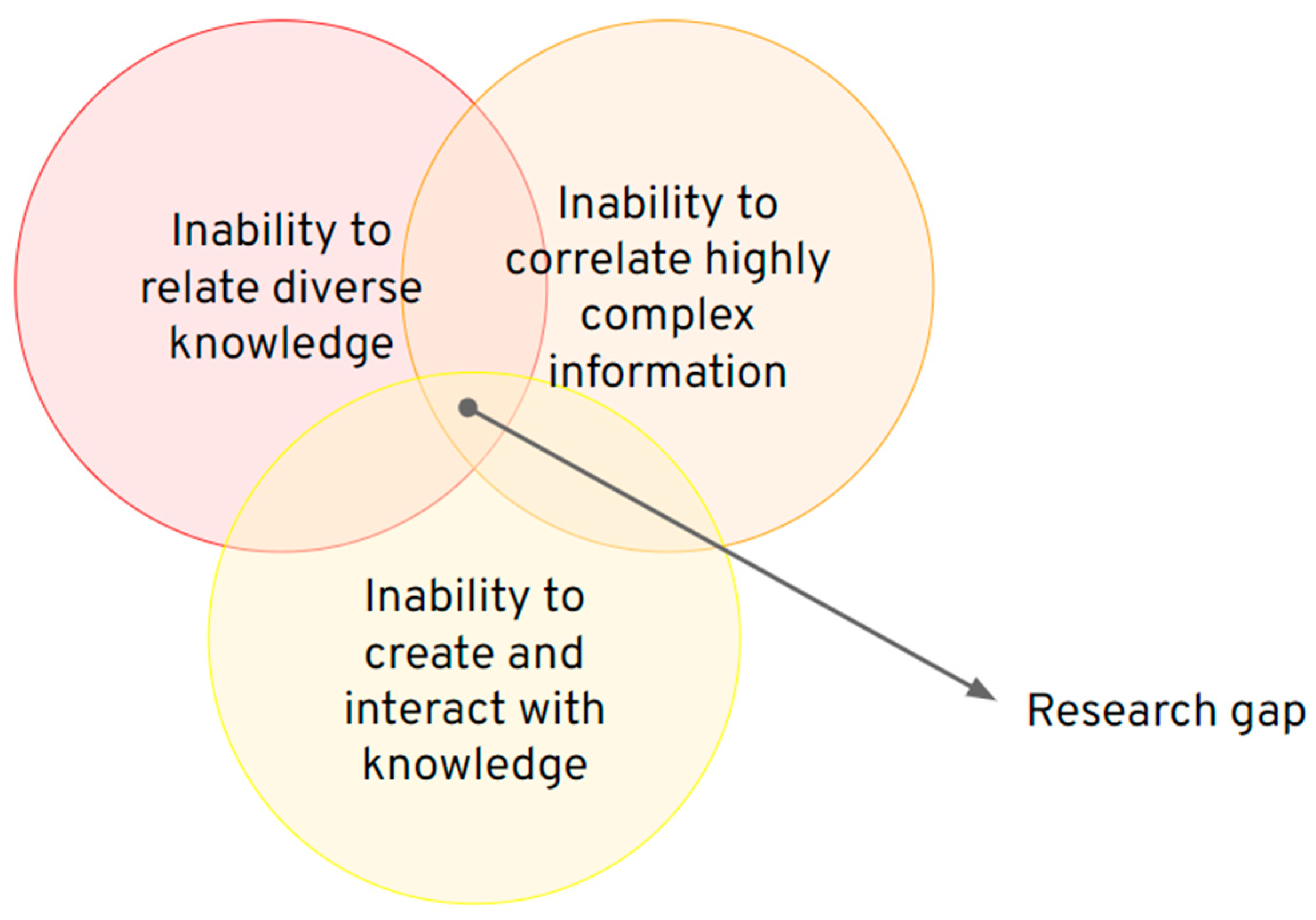

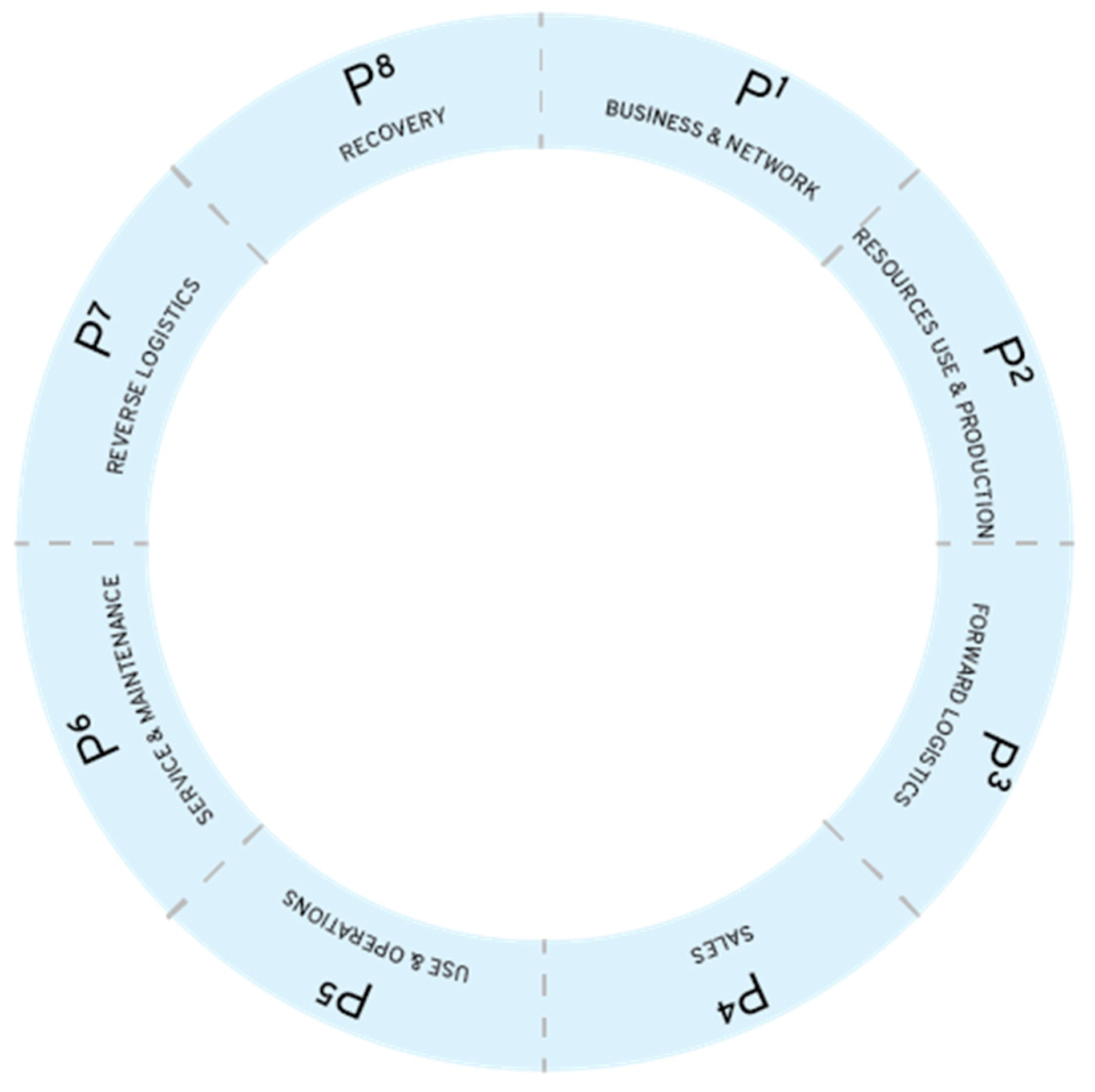
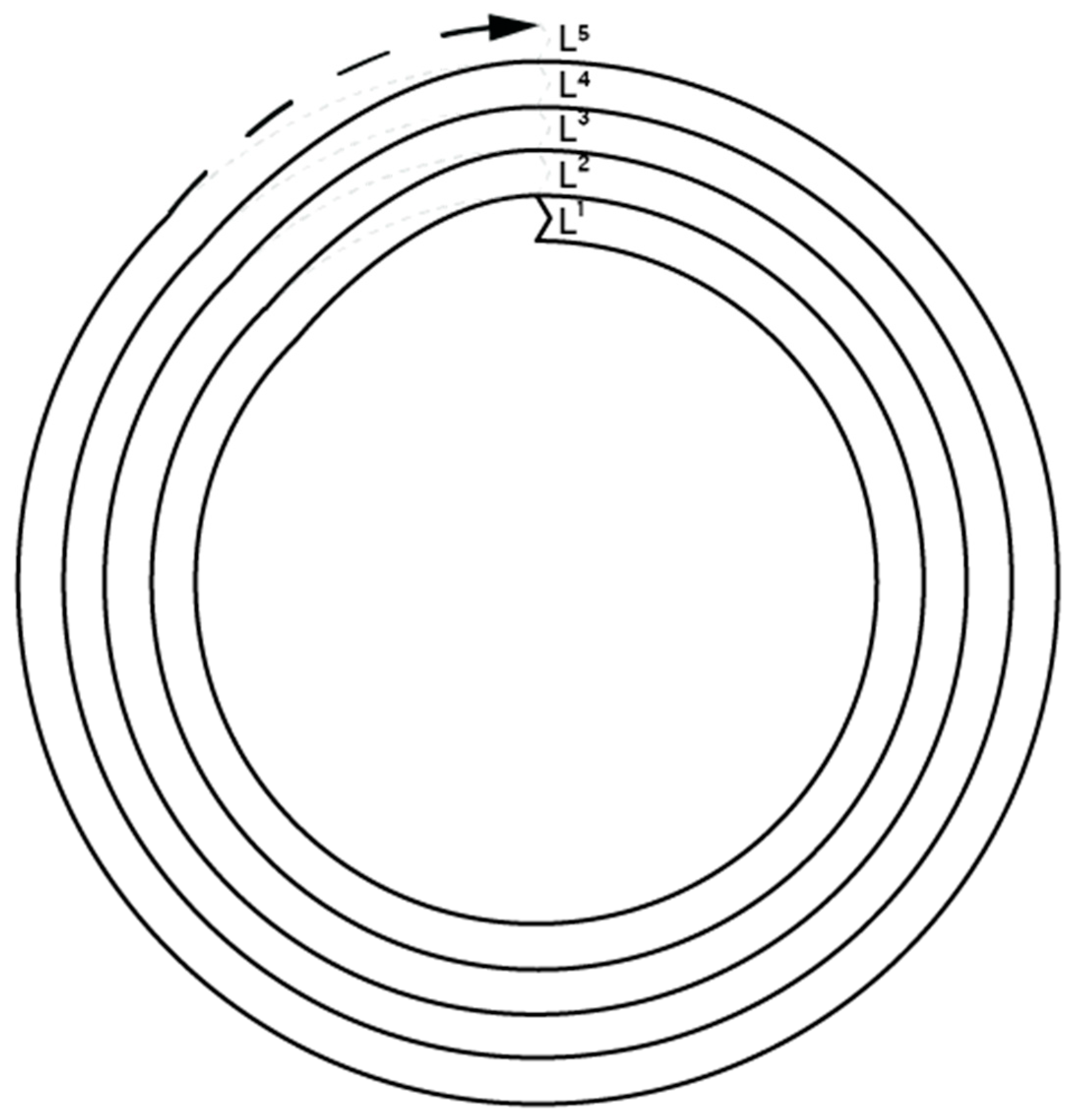
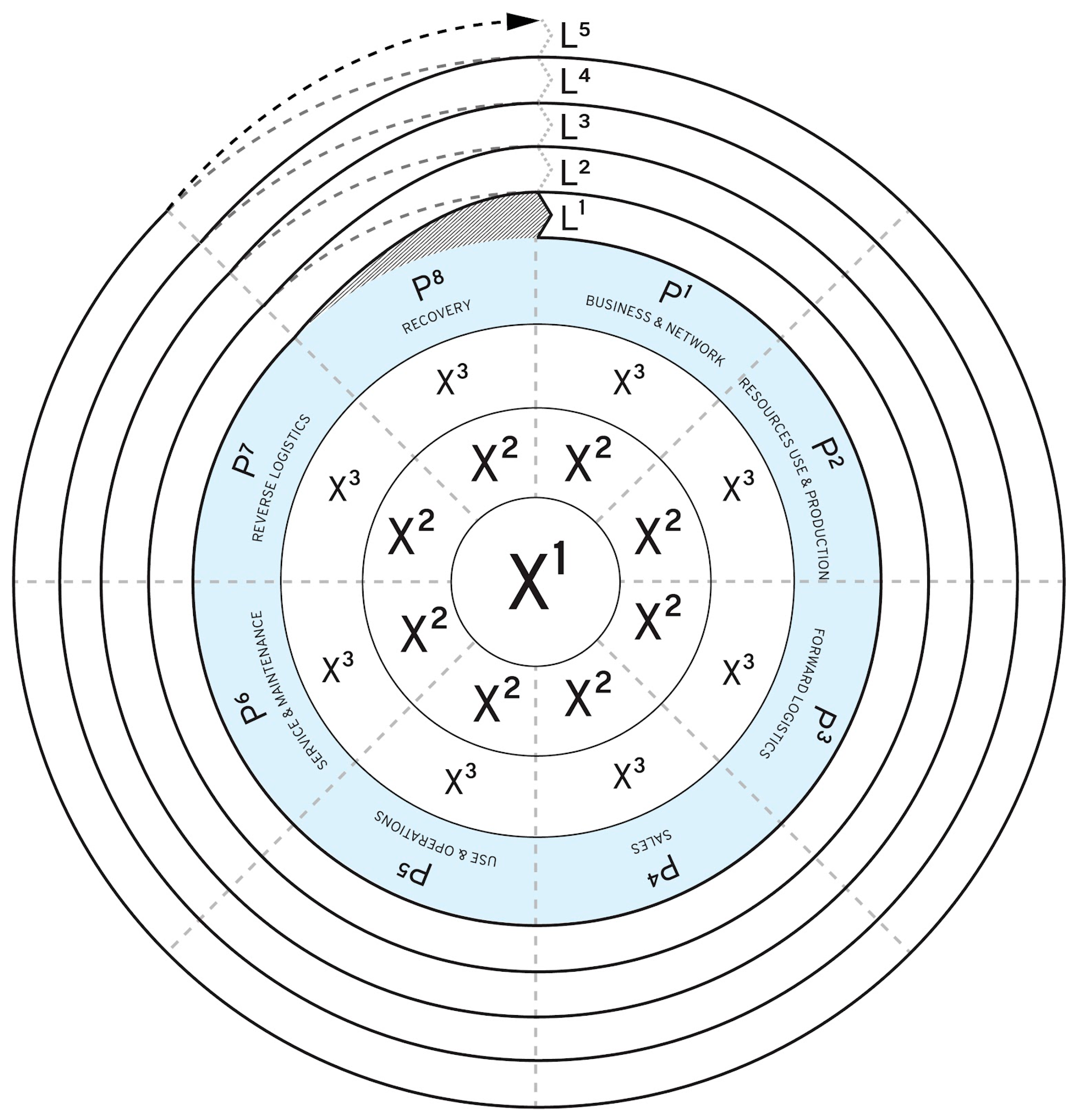
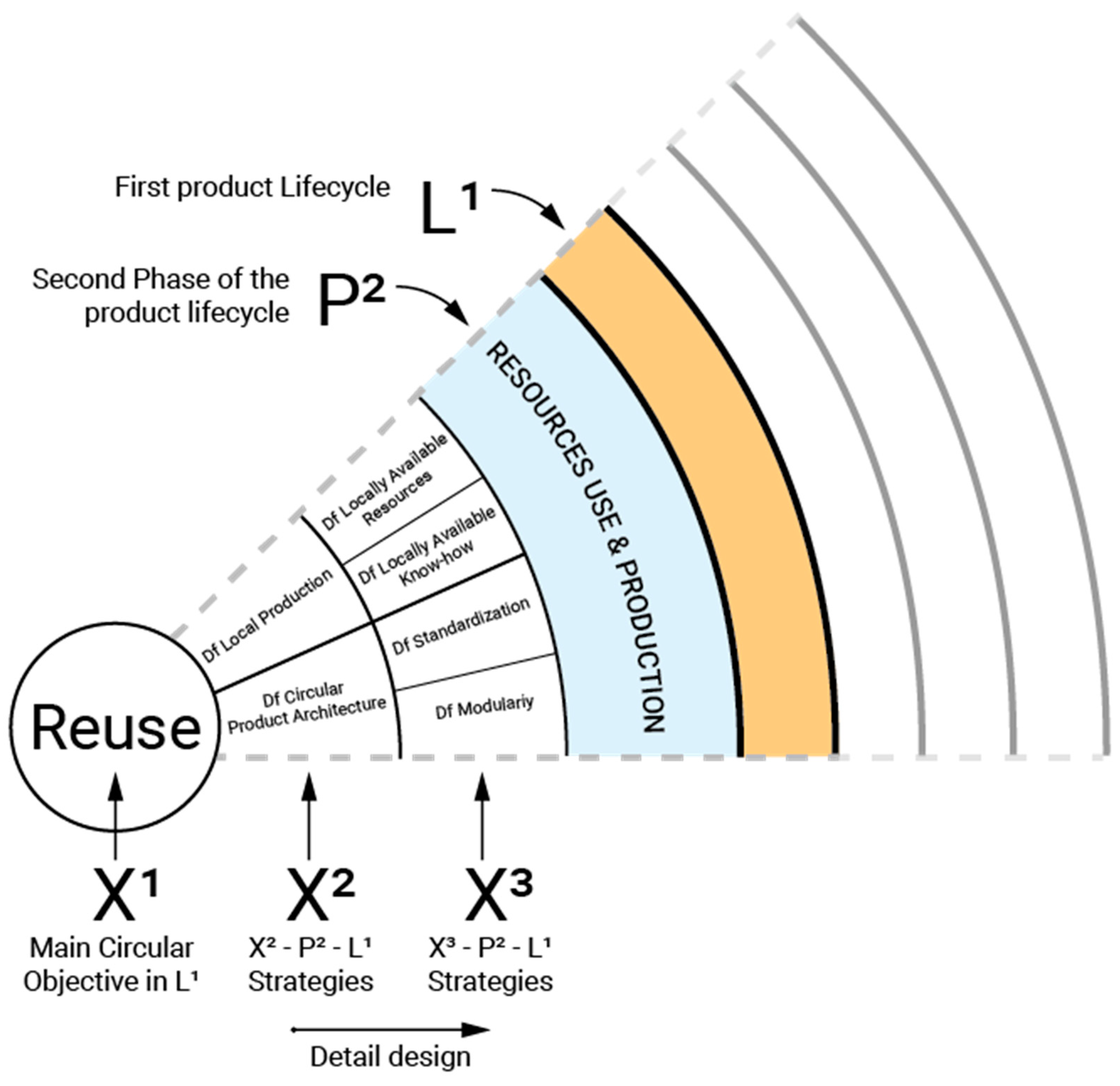

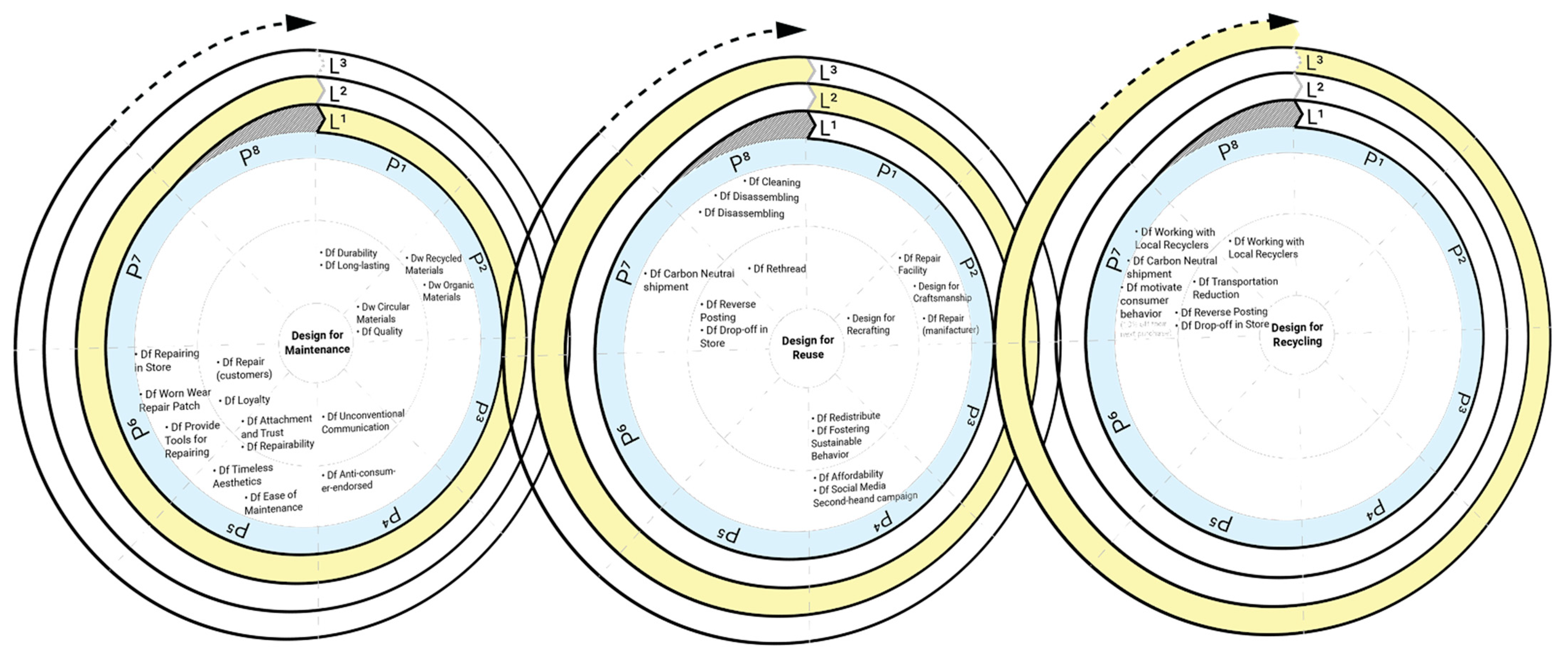
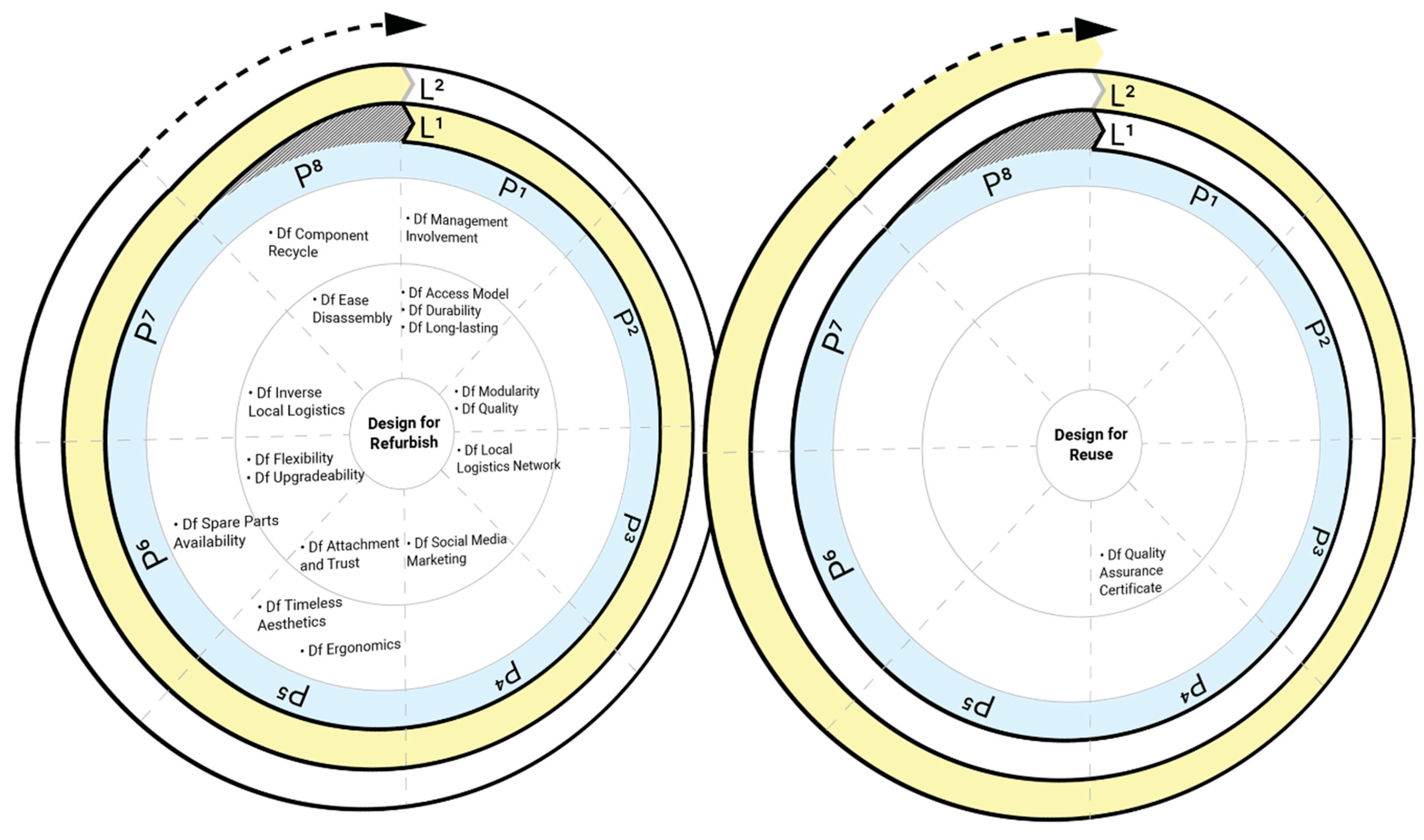


| Circular Objective | Description | Example of Related Design Strategies | References |
|---|---|---|---|
| Maintenance/longevity | Design for maintenance/longevity is an approach for extending the life of a product by incorporating maintenance considerations. Frequently, this circular objective is associated with the product–service system. Design for maintenance/longevity is close in meaning to design for slowing resource loops, design for long last products, design for obsolescence resilience, design for durable products, design for extending life cycle, or design for product-life extension. | Design for reliability, ease of maintenance, upgrading, repairability, modularisation, or standardisation. | [6,33,38,39,40,41,42] |
| Reuse | Design for reuse implies creating the conditions for value to be reused in a new product life cycle as-is, with minimal rework. As with the other circular objectives, planning for reuse should begin prior to the beginning of the product lifetime. While EU directives emphasise the importance of reuse [31], the design for reuse method has received less attention compared with other circular objectives. Design for reuse is different to design for creative upcycling and design for repurposing. | Design for collaborative logistics, upgrade, standardisation, robustness, return incentives or ideological pleasure. | [38,43,44,45,46,47,48,49,50] |
| Refurbishing | Design for refurbishing is defined as extending the product’s lifetime by restoring its full functionality and/or aesthetics by reworking only what is compromised. Only portions of the product that have failed or are badly worn can be disassembled and rebuilt with old and/or new components. Consumer acceptability of refurbished products has recently become a study focus. Design for refurbishing is close in meaning to design for reconditioning. | Design for disassembly, reassembly, local reparability, or consumer acceptance. | [51,52,53,54,55] |
| Remanufacturing | Design for remanufacturing extends product lifetime by restoring used products to like-new or better-than-new condition. To clean, restore, and replace components during remanufacturing, total disassembly is required. What sets remanufactured products apart from refurbishes is their condition, performance and warranty. Some scholars consider remanufacturing to be the most promising circular objective in the CE. | Design for disassembly, cleaning, inspection, repairing, replacing, testing, and reassembling | [51,52,56,57] |
| Recycling | When there are no other options to extend the product lifetime except recapturing the value of materials, recycling can be considered as the main circular objective. Design for recycling ensures proper material selection, separation, and reprocessing for new material flow. Design for recycling is close in meaning to design for upcycling. | Design for ease disassemble for recycling, manual or mechanical dismantling, semi- or destructive disassembly, consumer acceptance of recycled goods. | [52,58,59] |
| Design Strategies Classifications | List of the Reviewed Articles | Complementary Literature |
|---|---|---|
| Classification according to relevance | [6,11,16,22,24,26,73,74,75,76,77,78,79,80,81,82,83,84,85,86] | [34] |
| Classification according to product life cycle phases | [23,32,87,88,89] | [68,90] |
| Classification according to life cycles | [45,47,53,91,92,93,94] | [36] |
| Case Study | No. of Life Cycles | Circular Objective | Industry | Life Cycle Pattern | Source |
|---|---|---|---|---|---|
| Patagonia | Potentially 2 | Maintenance/longevity Reuse Recycle | Fashion | Open-loop | [46,97,98,99] |
| Bugaboo | 3 | Refurbish (first two cycles) Refurbish (second-hand market) | Personal transportation vehicle | Closed-loop | [100,101] |
| Loop by Terracycle | Potentially 100 | Reuse (over 100 cycles) Recycle | Packaging | Closed-loop | [37,102,103,104] |
| Fairphone | 1 | Maintenance/longevity Recycle | Consumer electronics | Open-loop | [87,105,106] |
Publisher’s Note: MDPI stays neutral with regard to jurisdictional claims in published maps and institutional affiliations. |
© 2022 by the authors. Licensee MDPI, Basel, Switzerland. This article is an open access article distributed under the terms and conditions of the Creative Commons Attribution (CC BY) license (https://creativecommons.org/licenses/by/4.0/).
Share and Cite
Franconi, A.; Ceschin, F.; Peck, D. Structuring Circular Objectives and Design Strategies for the Circular Economy: A Multi-Hierarchical Theoretical Framework. Sustainability 2022, 14, 9298. https://doi.org/10.3390/su14159298
Franconi A, Ceschin F, Peck D. Structuring Circular Objectives and Design Strategies for the Circular Economy: A Multi-Hierarchical Theoretical Framework. Sustainability. 2022; 14(15):9298. https://doi.org/10.3390/su14159298
Chicago/Turabian StyleFranconi, Alessio, Fabrizio Ceschin, and David Peck. 2022. "Structuring Circular Objectives and Design Strategies for the Circular Economy: A Multi-Hierarchical Theoretical Framework" Sustainability 14, no. 15: 9298. https://doi.org/10.3390/su14159298
APA StyleFranconi, A., Ceschin, F., & Peck, D. (2022). Structuring Circular Objectives and Design Strategies for the Circular Economy: A Multi-Hierarchical Theoretical Framework. Sustainability, 14(15), 9298. https://doi.org/10.3390/su14159298







